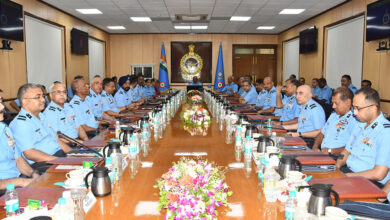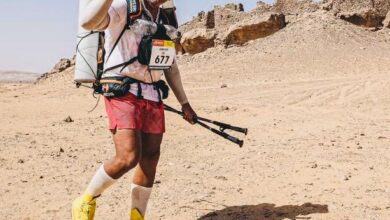Remembering 1971 Bangladesh Liberation War: IAF’s Finest Hour
By Air Marshal VK ‘Jimmy’ Bhatia (Retd)
Background
On the evening of December 3, 1971, as the Indian Prime Minister, Indira Gandhi, was returning to Delhi from Calcutta on board an Air HQ Communication Squadron aircraft the pilot came up to her Principal Adviser D.P. Dhar and asked him to come to the cockpit as there was an urgent message from Delhi. Dhar spent about three to four minutes in the cockpit, came out and spoke to Gandhi, walked back to his seat and turned to those sitting behind him and said, “The ‘fool’ has done exactly what one had expected.” And this officially started the third round of military confrontation between the two nations—India and Pakistan— since their creation by the British in 1947. However, the 1971 war was not due to Pakistan’s inane desire to annex Kashmir by force. This time, the Pak President and Martial Law Administrator, General Yahya declared war against India to teach it a lesson as it was seen to be meddling in Pakistan’s internal affairs. This is exactly what India was hoping for to be able to overtly start a military campaign in East Pakistan, along with the ‘Mukti Bahini’ force it had helped to train.
What started as a somewhat conservative military campaign, quickly turned into a blitzkrieg, resulting in the liberation of Dhaka within 14 days; and, the creation of a brand-new nation. Bangladesh rose from the ashes of East Pakistan where the fire was lit by none other than the Pakistan’s political and military establishment itself.
However, none of this would have been possible but for the Indian Air Force (IAF), which not only spearheaded the military campaign to achieve absolute air superiority in the East, but also provided superb support to the ground forces in all facets of their campaign to achieve the seemingly impossible (at least initially) aim of Dacca’s surrender – that too, within the available diplomatically constrained timeframe.
“Defence of the east lies in the west”: Pakistan’s Flawed War Doctrine
The quick outcome of the war in the East could also be attributed to Pakistan’s flawed War Doctrine. Since its very inception in August 1947 – when India was partitioned to support the two-nation theory – Pakistan’s military high command had always believed that the defence of its eastern wing lay in the west and adopted it as its War Doctrine. 1971 was no different. The strategic role of the Pak forces in the east was to hold out until Pakistan had defeated India in the west. Bulk of the Pak forces were therefore deployed in the west. As far as PAF (Pakistani Air Force) was concerned, it had deployed just one squadron of F-86 Sabres – albeit with an augmented UE (Unit Establishment) – in East Pakistan, while the bulk of its aircraft remained in the West.

India’s war philosophy in 1971 however was just the opposite of Pakistan’s with the point of decision being in the east. The Air Chief Marshal Pratap Chandra Lal-led IAF in consonance, had deployed its forces with such numerical strength in the east so as to overwhelm PAF by unleashing an all-out offensive in the shortest possible time and attain absolute air superiority. This not only helped the Indian ground forces to operate freely in enemy territory, but also made possible the famous Tangail drop, that resulted in their race to Dacca for its subsequent fall in record time.
In the western sector however, IAF adopted a policy of calibrated approach with the aim of causing as much attrition as possible to the enemy but keeping own losses under control. It was appreciated that territorial gains in the western sector was not as much of an aim as preventing the enemy to make advances into Indian Territory. The air campaign in the west was structured accordingly.
Lessons of 1965 Indo-Pak War
At the individual service level, there were many lessons for the IAF in the 1965 Indo-Pak war which warranted urgent corrective actions to be taken. It goes to the credit of the IAF that it had done its homework well and was fully prepared for the war when it came. The unforgettable loss of nearly 40 aircraft on the ground due to enemy air action during the 1965 war had galvanised the IAF to create hardened covered aircraft shelters (concrete blast pens) at its operational bases. The move paid rich dividends during the war with the IAF losing only three aircraft on the ground due to enemy air action and that too because these aircraft were taxiing in/out from their pens for operational missions. This was a total reversal from the earlier war as this time Pakistan Air Force (PAF) was on the receiving end losing a large number of aircraft to our counter-air missions.
A major shift in IAF strategy was brought about by the lessons learnt in 1965. Till then, the air force strategy was based on the Royal Air Force philosophy emanating from the Second World War, which placed the principal emphasis on the bomber as the primary instrument of offensive air power with the fighter being seen as essentially a defensive component. For the 1971 war, the IAF had fully incorporated the strategy of meaningful counter-air strikes against the PAF bases in both western and eastern theatres a bulk of which was carried out by fighter aircraft. Canberra light bombers were utilised largely for night bombing only. To achieve greater accuracy, a special unit, Tactics & Air Combat Development Establishment (TACDE) had been raised at Ambala and specially trained to carry out night strike missions against PAF airfields in addition to the night strikes by bombers. To a considerable extent, the unit was used for this purpose on the western front in the first two nights of the war.

On the inter-services front also, compared with its near-absence in the 1965 war, a very high level of synergy was achieved among the three service chiefs at the COSC (Chiefs of Staff Committee) level through personal maturity and meaningful cooperation. At the operational level, the entire organisation in support of the Army/Navy was rehashed and strengthened through inter-service cooperation. Advanced/MAO HQs of Western Air Command (WAC) and Eastern Air Command (EAC) were set up alongside their respective Army/Naval Commands. In the case of the Army, the organisations were extended further down the line, and each Corps HQ under the Western and Eastern Army had a Tactical Air Centre (TAC), with Forward Air Controllers (FACs) deployed in the field down to the Brigade level for guiding incoming air strikes onto their targets in the tactical battle area (TBA). In order to best meet the requirements of the Army, the IAF had earmarked specific squadrons for particular types of tactical support to specific areas. In the east, 60 per cent of IAF effort was initially allocated to close air support. Following the total neutralisation of the PAF in that sector, the entire air effort was diverted to that task. These details were known down to the level of the TACs and even the FACs. These measures paid off and were a great improvement over the comparatively inefficient Joint Army Air Operations Centre (JAAOC) functioning in 1965.

IAF’s War Strategy in the East Achieves Quick and Decisive Results
IAF’s war strategy of overwhelming the PAF’s lone fighter squadron in the East paid off early in the war. PAF had already lost three Sabres in Boyra even before the war had started. Then, within two days of the war, innovative use of MiG-21s in daylight steep glide bombing attacks against Tezgaon airfield at Dacca effectively grounded the Sabres, opening the skies fully for the IAF to carry out its myriad tasks with impunity. Use of Mi-4s to create an airbridge over Meghna River for the Army, followed by the famous Tangail paradrop completely reshaped the ground operations to not only facilitate a quick dash to Dacca but exert unbearable psychological pressure on the Pak Army. The coup de grace was also delivered by the IAF by attacking the Governor’s House in Dacca. The accuracy of the rocket strikes by MiG-21s and Hunters so pulverized the Establishment that the Governor, Mr Malik immediately resigned and fled from the spot. Lt gen AAK Niazi, the military commander followed suit, surrendering with 93,000 Pak troops two days later. Dacca was liberated and Bangladesh born.

IAF’s Strategy of Attrition/Çontainment Pays Off in the West
In the western sector however, IAF adopted a policy of calibrated approach with the aim of causing as much attrition as possible to the enemy but keeping own losses under control. It was appreciated that territorial gains in the western sector was not as much of an aim as preventing the enemy to make advances into Indian Territory. The air campaign in the west was structured accordingly.
In pursuance of this policy, IAF’s war effort in the west was based on a three-tiered ‘target system’ evolved by Air Headquarters. The first involved the use of fighters for ‘Air Defence’ as well as ‘Counter Air’ tasks along with attacks by fighter-bomber and bomber aircraft. The effectiveness with which this was pursued is borne out by the fact that as many as 24 enemy aircraft were destroyed on the ground alone in counter air strikes, with many kills achieved in the air as well (see Box for air strikes against PAF secret airbase at Shorkot Road led by the author). This resulted in little or no interference by the PAF on Indian land or naval forces in most sectors. The second tier involved hitting the enemy’s energy systems, including the oil storage tanks at Karachi, the Sui Gas Plant in Sind, the Attock Oil
After achieving its counter-air objectives, quickly shifting its focus on CSFO, with large scale interdiction of Pak communication systems and Pak Army’s logistics areas, as also providing the required amount of close air support to the army, IAF not only pinned down Pak army in different locations but also succeeded in providing the requisite counter-force to Tikka Khan’s strike force, immobilising it even before it could get off to a start.

Last Word
In the end, it could be said that while IAF acted as a spearhead in the Indian military’s blitzkrieg to Dacca in the east; in the west, it stood as a wall to thwart any offensive designs of Pak Army to violate India’s territorial integrity. In addition, IAF’s innovative use of single-seat fighters for night harassment strikes, the lumbering An-12s in bombing role, successful employment of the almost ancient Vampires – even piston-engined Harvards – in close air support roles in J&K and the epic air vs. armour battle in Longewala not only surprised many but also came up for praise by many leading air forces of the world.
Perhaps it would be best to quote Air Chief Lal who summed it up by asking a question to himself, “How did we perform in December 1971?” and also provided the answer; “Well, we can generally say we did not do too badly. In fact, we did rather well: We won the war.”







